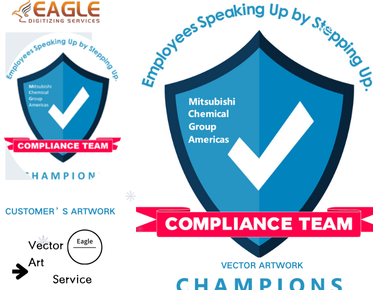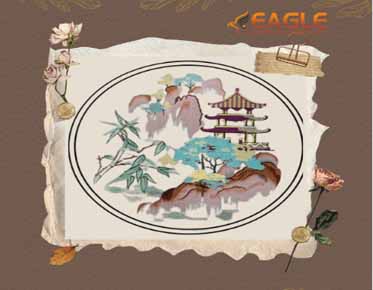Quick Guide: How Do I Convert Any Image to a Vector?
In the realm of digital design, vectorgraphics reign supreme. They offer unparalleled scalability and
versatility, making them essential for everything from logos to intricate
illustrations. If you've ever wondered how to transform an ordinary image into
a stunning vector, you're in the right place. This guide will unravel the
complexities of image conversion, empowering you to wield vectors like a pro.
The Basics of Image Conversion
What
Does It Mean to Convert an Image to a Vector?
Converting an
image to a vector involves translating the pixel-based representation of an
image into paths and shapes defined by mathematical equations. This process
allows for the image to retain its detail and quality, regardless of size
changes. It's akin to transforming a watercolor painting into a clean line
drawing; the essence remains intact, but the medium changes.
Common
Formats: SVG, AI, and EPS Explained
When it comes to
vector formats, several options stand out. SVG (Scalable Vector Graphics) is
widely used for web applications due to its compatibility with browsers. AI
(Adobe Illustrator) is the native format for Adobe's design software, favored
for its comprehensive editing capabilities. EPS (Encapsulated PostScript) is a
versatile format suitable for both print and digital use. Understanding these
formats will help you choose the right one for your project.
Choosing the Right Image for Conversion
Which
Images Are Best for Vectorization?
When it comes to
vectorization, not every image is made equal. Simple images with clear lines
and distinct shapes, such as logos or illustrations, translate well into
vectors. On the other hand, complex photographs or images with intricate
details may pose challenges during conversion. The key is to select images that
can be easily simplified while retaining their core elements.
Factors
to Consider: Complexity, Colors, and Detail
When choosing an
image for conversion, consider its complexity, color scheme, and level of
detail. Images with fewer colors and less complexity are generally easier to
vectorize. Additionally, high-contrast images tend to yield better results, as
they allow for clearer distinctions between shapes and paths. Striking a
balance between detail and simplicity is essential for successful
vectorization.
Tools for Image Vectorization
An
Overview of Popular Vector Conversion
Tools
Several tools can
assist you in your image vectorization journey. Adobe Illustrator is a
powerhouse for manual conversion, offering advanced features for precision.
Another well-liked option is CorelDRAW, which is renowned for its intuitive
interface. For those seeking free options, Inkscape provides robust
capabilities without the price tag. Exploring these tools will help you
determine which aligns best with your needs.
Comparing
Free vs. Paid Software: What’s Right for You?
The decision
between free and paid software often boils down to your specific requirements.
Paid software, like Adobe Illustrator, offers comprehensive features and
support, making it ideal for professional use. Conversely, free tools like
Inkscape can suffice for casual users or those just starting. Weighing your
budget against the features you need is crucial in making the right choice.
Step-by-Step Guide to Manual Vectorization
How
to Manually Create a Vector Image Using Software
Creating a vector
image manually involves several steps. Begin by importing your image into the
software of your choice. Use the pen tool to trace the outlines, converting the
image into a series of connected paths. Adjust curves and anchor points for
precision, ensuring that the shapes reflect the original image accurately. Once
you're satisfied with your tracing, fill in colors and add details as
necessary.
Using
Adobe Illustrator: A Beginner’s Tutorial
For those new to
vectorization, Adobe Illustrator is a great starting point. After opening your
image, utilize the "Image Trace" feature to convert it automatically.
From there, refine your paths using the "Direct Selection" tool to
adjust anchor points. Familiarize yourself with layers to manage different
elements, and don’t forget to save your work frequently. With practice, this
process will become second nature.
Using Online Converters
Exploring
Free Online Tools for Quick Conversion
If manual
vectorization feels daunting, online converters offer a quick and user-friendly
alternative. Websites like Vector Magic and Online-Convert can transform your
images with just a few clicks. Simply upload your image, choose your desired
settings, and let the tool do the work. These platforms are especially useful
for simple images and can save you time when you need results fast.
How
to Use an Online Converter: A Step-by-Step Guide
Using an online
converter is straightforward. Start by selecting a reputable site. Upload your
image and choose the vector format you need. Adjust any available settings to
tailor the conversion process. After the conversion is complete, download your
new vector file and open it in your preferred design software for any necessary
tweaks. Voilà! You now have a vector image ready for use.
Exploring Advanced Techniques
Understanding
Image Tracing and Its Applications
Image tracing is
a powerful technique for vectorization, allowing you to convert raster images
into vectors efficiently. This method involves analyzing the colors and shapes
in an image to create paths that mimic the original. It’s particularly useful
for converting complex images or illustrations into scalable vectors that
maintain their integrity.
Tips
for Achieving Cleaner Vectors with Tracing
To achieve
cleaner vectors through tracing, start with a high-resolution image. This will
yield better results, as the software can more accurately detect edges and
colors. Adjust tracing settings, such as path fidelity and color complexity, to
enhance clarity. After tracing, inspect and clean up any unnecessary points or
shapes to refine the final vector image.
Adjusting Settings for Optimal Results
Finding
the Right Settings for Your Image Type
Finding the ideal
settings for your image type is crucial for successful conversion. Experiment
with parameters like threshold, which determines how much contrast to use for
tracing. For simpler images, lower thresholds can yield satisfactory results,
while more complex images may require higher settings. Take time to adjust
these variables to match your specific image characteristics.
How
to Experiment with Thresholds, Colors, and More
Experimentation
is key when adjusting settings. Begin with the default settings and make
gradual adjustments. Try different thresholds to see how they affect the detail
of your vector. Additionally, play with color options to determine the best
representation for your image. Keeping a record of your settings will help
refine your approach for future conversions.
Common Challenges in Vector Conversion
Identifying
Issues: Blurriness, Color Distortion, and More
Vectorconversion isn’t without its challenges. Common issues include blurriness, where
details are lost during the conversion process, and color distortion, which can
alter the original hues. Other problems may arise from overly complex images
that don’t translate well into vector format. Being aware of these challenges
can help you troubleshoot effectively.
Troubleshooting
Tips for a Smooth Conversion Process
When facing
issues during conversion, start by checking your image quality. Ensure that
you’re working with a high-resolution file to minimize blurriness. If colors
appear distorted, revisit your color settings or experiment with different
formats. Don't hesitate to use the software’s help resources or forums for
additional support. Persistence is key!
Cleaning Up Your Vector
How
to Refine and Edit Your Vector Image
Once your vector
image is created, it’s time for some housekeeping. Use the software’s editing
tools to refine your vector by smoothing out curves, deleting unnecessary
paths, and adjusting colors. Pay attention to alignment and proportions,
ensuring that the final product is polished and professional.
Using
Layers and Paths for Better Results
Utilizing layers
can significantly enhance your workflow when cleaning up vectors. Group similar
elements together to make editing easier and more organized. Paths can be
adjusted individually, allowing for precise modifications without affecting the
entire design. This approach enables a more streamlined editing process,
resulting in a cleaner final product.
Working with Text in Vector Images
Converting
Text: How to Handle Typography in Vectors
Converting text
to vector format requires special attention to typography. It’s crucial to
convert text to outlines or paths to ensure that the typography retains its
integrity regardless of whether the font is available on other devices. This
process transforms the text into vector shapes, making it scalable and editable
as part of the design.
Best
Practices for Ensuring Readability and Style
When working with
text in vector images, prioritize readability and style. Choose fonts that
complement your design and maintain legibility at various sizes. Adjust spacing
and alignment for a polished appearance, and consider contrasting colors to
enhance visibility. Striking the right balance between style and functionality
is key to successful typography in vector designs.
The Importance of Color in Vectorization
Understanding
Color Modes: RGB vs. CMYK
Color modes play
a significant role in vectorization. RGB (Red, Green, Blue) is the color mode
used for digital screens, while CMYK (Cyan, Magenta, Yellow, Key/Black) is used
for printing. Understanding these modes is essential for ensuring that colors
appear as intended, whether on-screen or in print.
How
to Maintain Color Integrity During Conversion
Maintaining color
integrity during conversion involves choosing the appropriate color mode for
your project. When preparing for print, ensure your vector file is in CMYK to
avoid unexpected color shifts. Preview your design on different devices to
ensure consistent color representation. Being vigilant about color settings
will enhance the quality of your final product.
Saving and Exporting Your Vector Files
Choosing
the Right Format for Your Needs
When saving your
vector files, select the format that best suits your needs. For web use, SVG is
ideal, while AI and EPS are better suited for print. Consider your project
requirements, as well as any software compatibility, when making your choice.
How
to Properly Save and Export Your Vector Images
Properly saving
and exporting your vector images is crucial for preserving quality. Use the
"Save As" option to choose your desired format, ensuring that you
select the appropriate settings for your output. Double-check the resolution
and color settings before finalizing to guarantee that your vector looks
fantastic in its final form.
Embarking on the journey of mastering image conversion can open up a world of creative possibilities. With the right tools, techniques, and knowledge, anyone can learn to convert images to vectors and produce stunning results.
The world of vectors is yours to explore. Embrace experimentation, hone your skills, and don’t shy away from pushing creative boundaries. Whether for personal projects or professional endeavors, mastering image conversion will empower you to bring your artistic vision to life.



